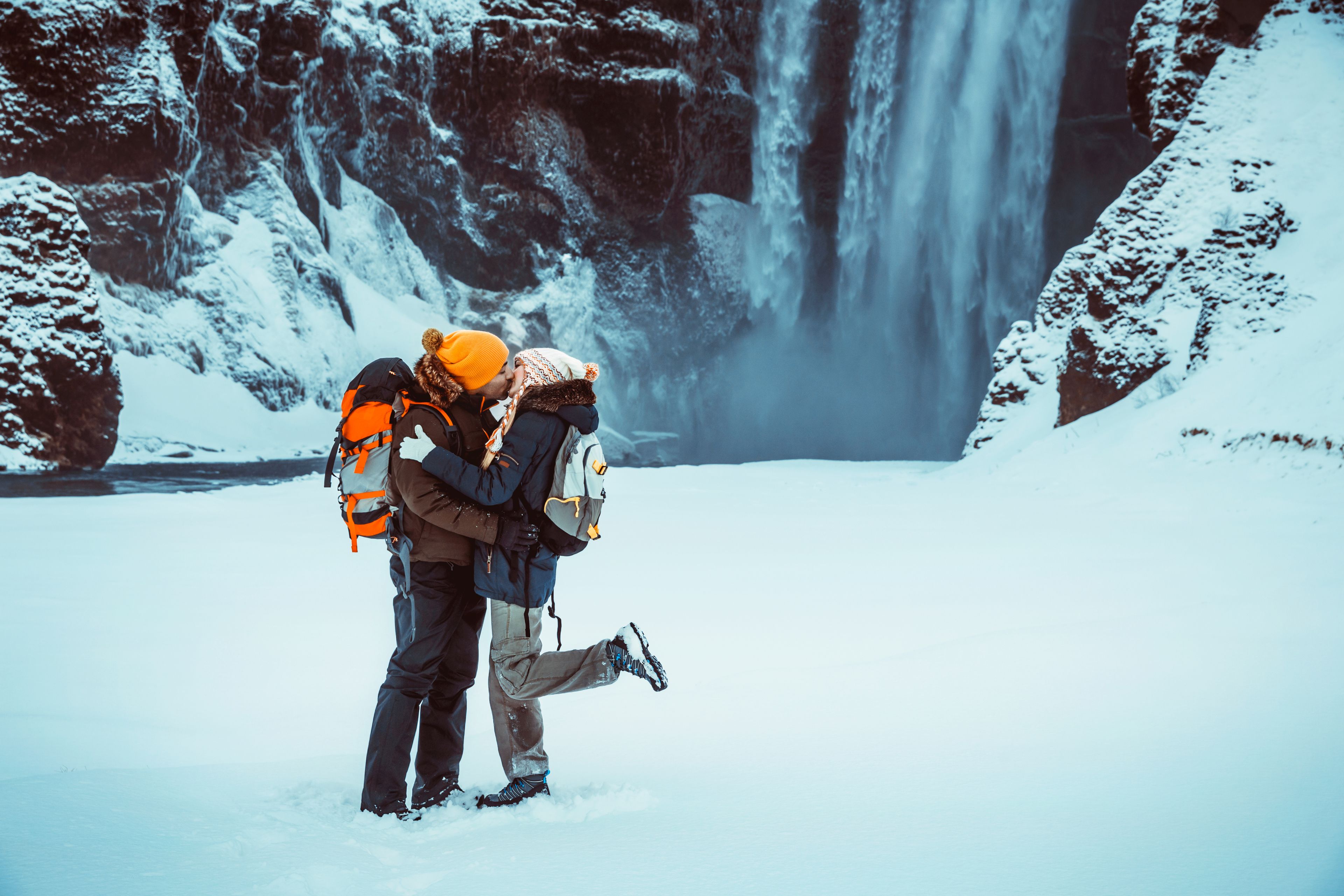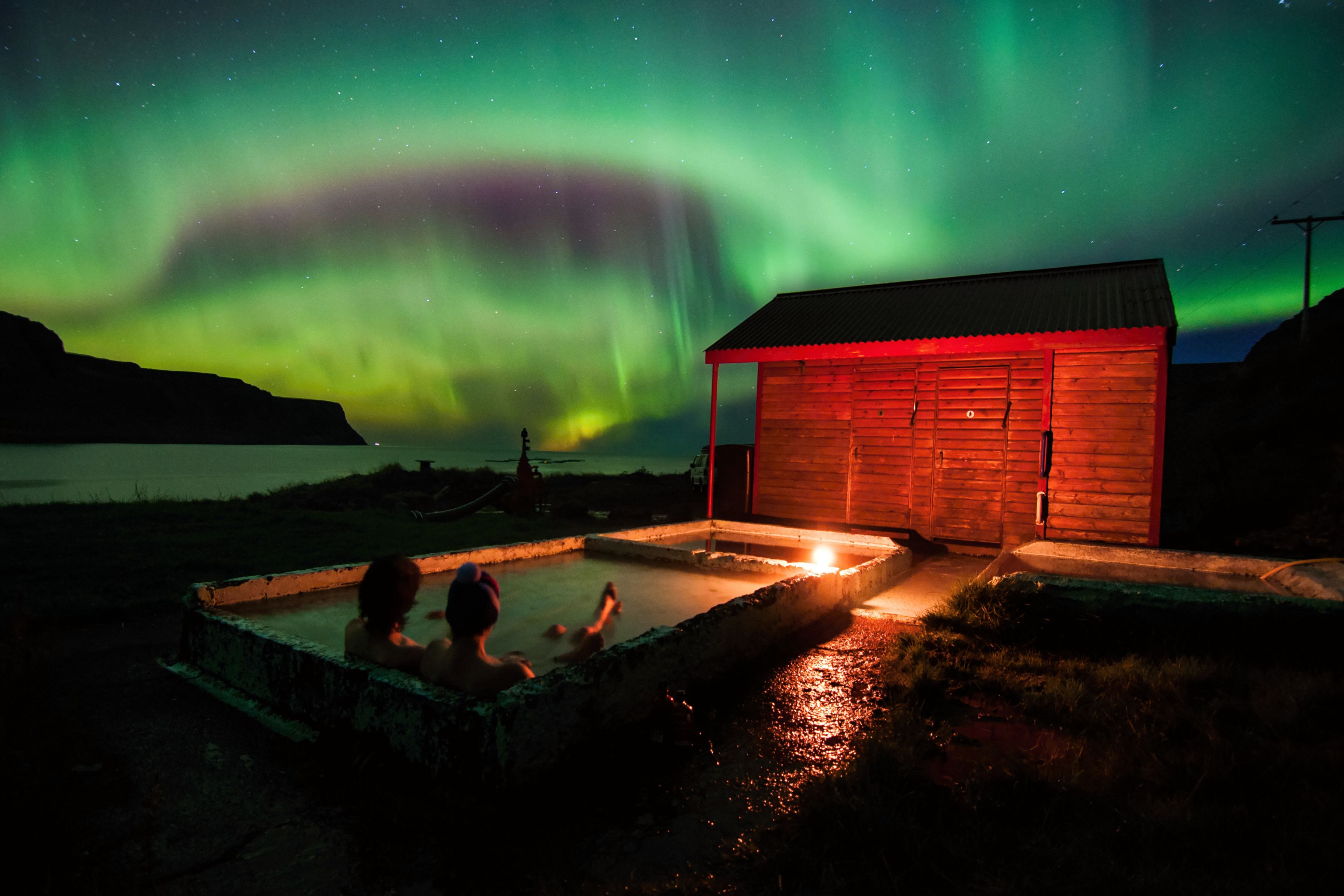
What to Expect: Iceland Weather in March
Jump to chapter
Iceland is a country known for its stunning landscapes, unique culture, and unpredictable weather. If you're planning a trip to Iceland in March, you may be wondering what kind of weather to expect. In this article, we'll talk about the weather in Iceland in march and give you some tips on how to get ready for your trip.
What is the Weather Like in Iceland in March?

March is considered the beginning of spring in Iceland, but don't let that fool you. The Iceland weather in march can still be quite cold and unpredictable. The average temperature in Iceland in March is around 32°F (0°C), with highs reaching up to 39°F (4°C) and lows dropping to 27°F (-3°C).
Rain and Snow
March is one of the wettest months in Iceland, with an average of 13 days of precipitation. This can come in the form of rain, snow, or a mix of both. The amount of precipitation varies throughout the country, with the south and west coasts receiving the most rain and the highlands experiencing the most snow.
Wind
Iceland is known for its strong winds, and March is no exception. The average wind speed in March is around 10 mph (16 km/h), but it can reach up to 20 mph (32 km/h) or more. This can make the already cold temperatures feel even colder, so be sure to pack warm layers and windproof outerwear.
Daylight Hours
In March, Iceland experiences around 12 hours of daylight, with the sun rising around 7:30 am and setting around 7:30 pm. This gives you plenty of time to explore the country, but be aware that the days are still quite short compared to other times of the year.
March 2024 Weather Recap
To better understand what to expect from the weather in Iceland in March, let's take a look at what happened in 2024 in terms of temperature, rain, snow, and sunshine.
March brought quite a mix of weather to Iceland in 2024. The southwest enjoyed sunny and mild days, while the north had colder, wetter conditions. Northeasterly winds were common, and by the end of the month, heavy snow and strong winds hit the north and east. These late storms caused travel problems and triggered avalanches in some areas. Here’s a closer look at what March had in store:
(Most of the information is from Vedur.is)
Temperatures
- Reykjavík: Reykjavík averaged 1.7°C (35.06ºF), which is 0.5°C above the 1991–2020 average and 0.2°C above the past decade's average.
- Akureyri: The average temperature in Akureyri was -0.3°C (31.46ºF), 0.4°C below the 1991–2020 average and 0.7°C below the past decade's average.
- Stykkishólmur: The average temperature here was 0.2°C (32.36ºF).
Highest & Lowest Averages Nationwide
Here’s a quick breakdown of average temperatures in March 2024 and how they compare to the 1991–2020 period:
- The warmest average temperature, 4.1°C (39.38ºF), was recorded in Surtsey.
- The coldest average temperature, -6.1°C (21.02ºF), was at Sátu north of Hofsjökull.
- Svartárkot was the coldest inhabited spot, averaging -4.1°C (24.62ºF).
- The warmest day of the month reached 12.4°C (54.32ºF) in Húsafell on the 6th.
- The coldest temperature was -22.3°C (-8.14ºF), recorded at Mývatn and Setur south of Hofsjökull on the 3rd.
March 2024 Extremes
- In Reykjavík, the coldest day was -7ºC (19.4°F) on March 2nd, while the warmest was 10ºC (50°F) on March 6th and 8th.
- In Akureyri, the lowest temperature was -15ºC (5°F) on March 3rd, while the highest was 7ºC (44.6°F) on March 5th, 6th, and 8th.
Precipitation
Rainfall varied a lot across the country in March:
- Reykjavík measured 51.3 mm, about 65% of the 1991–2020 average.
- Akureyri got 71.6 mm, 50% above average.
- Stykkishólmur saw 45.8 mm, while Höfn in Hornafjörður had 175.2 mm.
Days with 1.0 mm or more of precipitation:
- Reykjavík: 9 days (5 fewer than average)
- Akureyri: 14 days (5 more than average)
Snow
Snowfall ramped up in the north and east toward the end of the month, causing travel disruptions and a few avalanches.
- Reykjavík had only 1 completely snowy day, 8 fewer than average for March.
- Akureyri, on the other hand, had 18 snowy days, 2 more than usual.
Sunshine
March turned out to be a bright month, especially in the southwest:
- Reykjavík recorded 178.4 hours of sunshine, 68.2 hours above average.
- Akureyri had 84.0 hours, 6.2 hours more than the average.

What to Pack for Iceland in March

When packing for Iceland in March, it's important to be prepared for a variety of weather conditions. Here are some essential items to pack for your trip:
Warm Layers
The key to staying warm in Iceland is layering. Be sure to pack plenty of warm base layers, such as thermal underwear, long-sleeved shirts, and wool sweaters. These will help keep you warm and dry, even in the coldest temperatures.
Waterproof Outerwear
With the high chance of rain and snow, it's important to have waterproof outerwear. A good rain jacket and waterproof pants will keep you dry and comfortable while exploring Iceland's beautiful landscapes.
Sturdy Shoes
Iceland's terrain can be rugged and slippery, especially in March when there may still be snow and ice on the ground. Be sure to pack sturdy, waterproof shoes with good traction to keep your feet warm and safe.
Accessories
Don't forget to pack accessories to keep you warm and protected from the elements. A warm hat, gloves, and scarf are essential for staying warm in Iceland's cold weather. Sunglasses are also a must, as the sun can be quite bright even in the winter months.
What to Do in Iceland in March
Despite the cold weather, there are still plenty of activities to enjoy in Iceland in March. Here are some ideas to add to your itinerary:

Northern Lights
March is one of the best months to see the Northern Lights in Iceland. With longer nights and clearer skies, you have a higher chance of witnessing this breathtaking natural phenomenon. Be sure to check the forecast and plan a trip outside of the city to get the best view.
Glacier Hiking
Iceland is home to some of the most stunning glaciers in the world, and March is a great time to explore them. With the right gear and a knowledgeable guide, you can hike on a glacier and experience its beauty up close.
Hot Springs
Iceland is known for its geothermal activity, and there's no better way to warm up in March than by soaking in a hot spring. The Blue Lagoon is a popular choice, but there are also many natural hot springs scattered throughout the country.
Winter Sports
If you're feeling adventurous, you can try your hand at some winter sports in Iceland. Skiing, snowboarding, and snowmobiling are all popular activities in March. Just be sure to book in advance and check the weather conditions before heading out.
Tips for Traveling in Iceland in March
Here are some additional tips to keep in mind when traveling to Iceland in March:
Book Accommodations in Advance
March is a popular time to visit Iceland, so be sure to book your accommodations in advance. This is especially important if you plan on staying in a remote area or a popular tourist destination.
Be Flexible with Your Plans
Iceland's weather can be unpredictable, so it's important to be flexible with your plans. If a snowstorm hits, your flight may be delayed or canceled, and roads may be closed. Have a backup plan and be prepared to make changes to your itinerary if necessary.
Rent a 4x4 Vehicle
If you plan on driving in Iceland, it's recommended to rent a 4x4 vehicle. This will give you better traction on icy roads and allow you to explore more remote areas of the country.
Stay Safe
Iceland's weather can be harsh, so it's important to take precautions to stay safe. Always check the weather forecast before heading out, and be sure to dress appropriately for the conditions. If you plan on hiking or participating in any outdoor activities, be sure to let someone know where you're going and when you plan on returning.
Conclusion
Iceland's weather in March may be cold and unpredictable, but with the right preparation and mindset, you can still have an amazing trip. Be sure to pack warm layers, waterproof outerwear, and sturdy shoes, and plan for a variety of activities to make the most of your time in this beautiful country. With these tips in mind, you'll be ready to take on Iceland's March weather and create unforgettable memories.
Latest Blog Posts
 Places to Visit
Places to VisitGatklettur: Iceland's Stunning Stone Arch
Iceland is packed with cool sights, but some of the best ones are hiding away from the busy tourist spots. Gatklettur is a natural stone arch sitting on the Snæfellsnes Peninsula – a hidden gem most travelers miss. Here’s everything you need to know before you go.
 Highlands
HighlandsGjáin Valley in Iceland: A Hidden Treasure in the Highlands
Iceland has tons of amazing landscapes, but Gjáin Valley truly stands out. This green paradise tucked in the Icelandic Highlands feels magical for anyone willing to step off the tourist path. Planning a trip to Iceland? Here's what you should know about this special spot.
 Canyons
CanyonsMúlagljúfur Canyon: A Secret in South Iceland Waiting to Be Explored
Iceland is a country packed with amazing natural monuments. They can be found in every corner of the country, but certain regions are especially full of these wonders. And, without a doubt, South Iceland has a lot to see and do. Many of the most famous national landmarks are located in this part of the Island, and some are well-known worldwide. However, there are still a few places that not many people, apart from the locals, know and that don’t usually appear on travel guides. If you’re looking for one, then you’re in luck. Múlagljúfur Canyon sits here, a stunning escape for travelers ready to explore beyond the usual stops. This rugged gorge, with its waterfalls crashing down mossy cliffs, showcases the rawest side of Iceland like few others. Away from the busy tourist trails, it offers crisp air, dramatic views, and a peaceful vibe that’s hard to resist. If you’re up for a hike and eager to uncover a lesser-known gem, Múlagljúfur is calling your name.